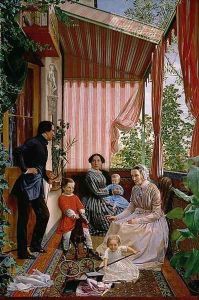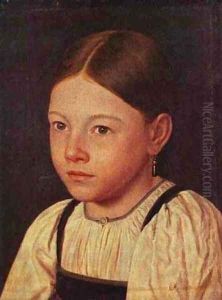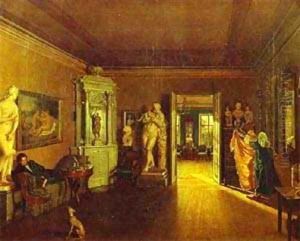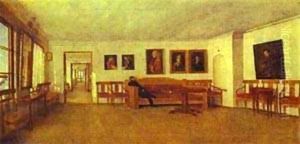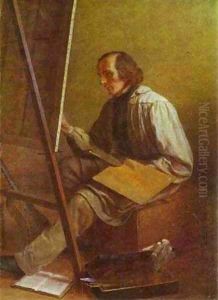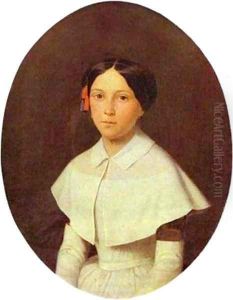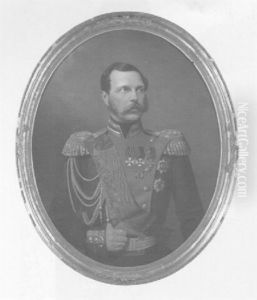Fedor Mikhailovich Slavyansky Paintings
Fedor Mikhailovich Slavyansky was a notable Russian artist, born in 1817 in the Russian Empire. His work spanned the mid to late 19th century, a period marked by significant cultural and social transformations in Russia. Slavyansky is particularly remembered for his contributions to religious art, having created numerous icons and frescoes for Russian Orthodox churches. His artistry was deeply influenced by the traditions of the Russian Orthodox Church, as well as the burgeoning movements of Romanticism and Realism that swept through European art during his lifetime.
Slavyansky's education in art began at an early age, and he was eventually admitted to the Imperial Academy of Arts in Saint Petersburg, where he honed his skills and developed his distinctive style. Throughout his career, he was recognized for his meticulous attention to detail, his adept use of color, and his ability to convey spiritual depth in his religious compositions. Despite the prominence of religious themes in his work, Slavyansky also explored secular subjects, producing portraits, landscapes, and historical scenes that offer a glimpse into the Russian society of his time.
In addition to his painting, Slavyansky contributed to the restoration and preservation of medieval Russian art, recognizing the importance of Russia’s artistic heritage. His efforts in this area helped to inspire a renewed interest in traditional Russian artistic forms and techniques among his contemporaries and future generations of artists. Slavyansky's legacy is not only preserved in the works he left behind but also in his influence on the development of Russian art, particularly in the realm of religious painting.
Fedor Mikhailovich Slavyansky passed away in 1876, but his work continues to be celebrated for its beauty, spiritual depth, and historical significance. Today, his pieces can be found in museums, galleries, and churches across Russia and beyond, serving as a testament to his skill, devotion, and vision as an artist.
